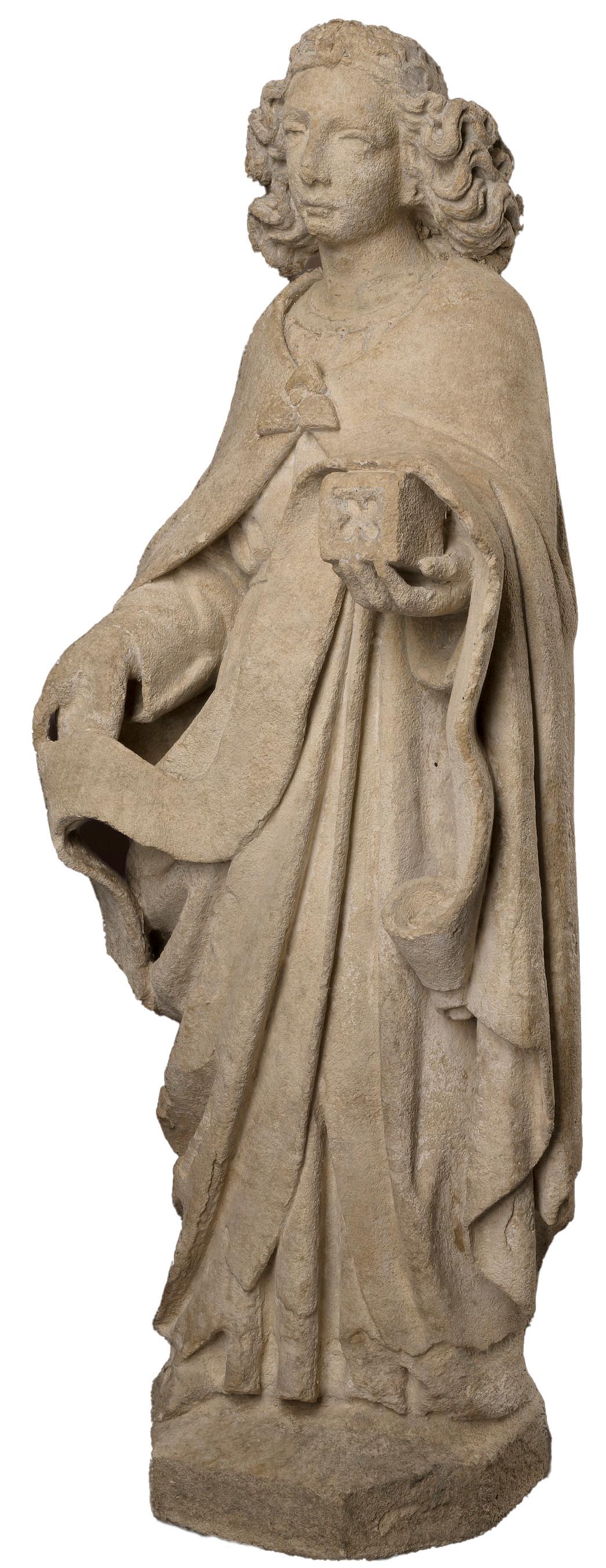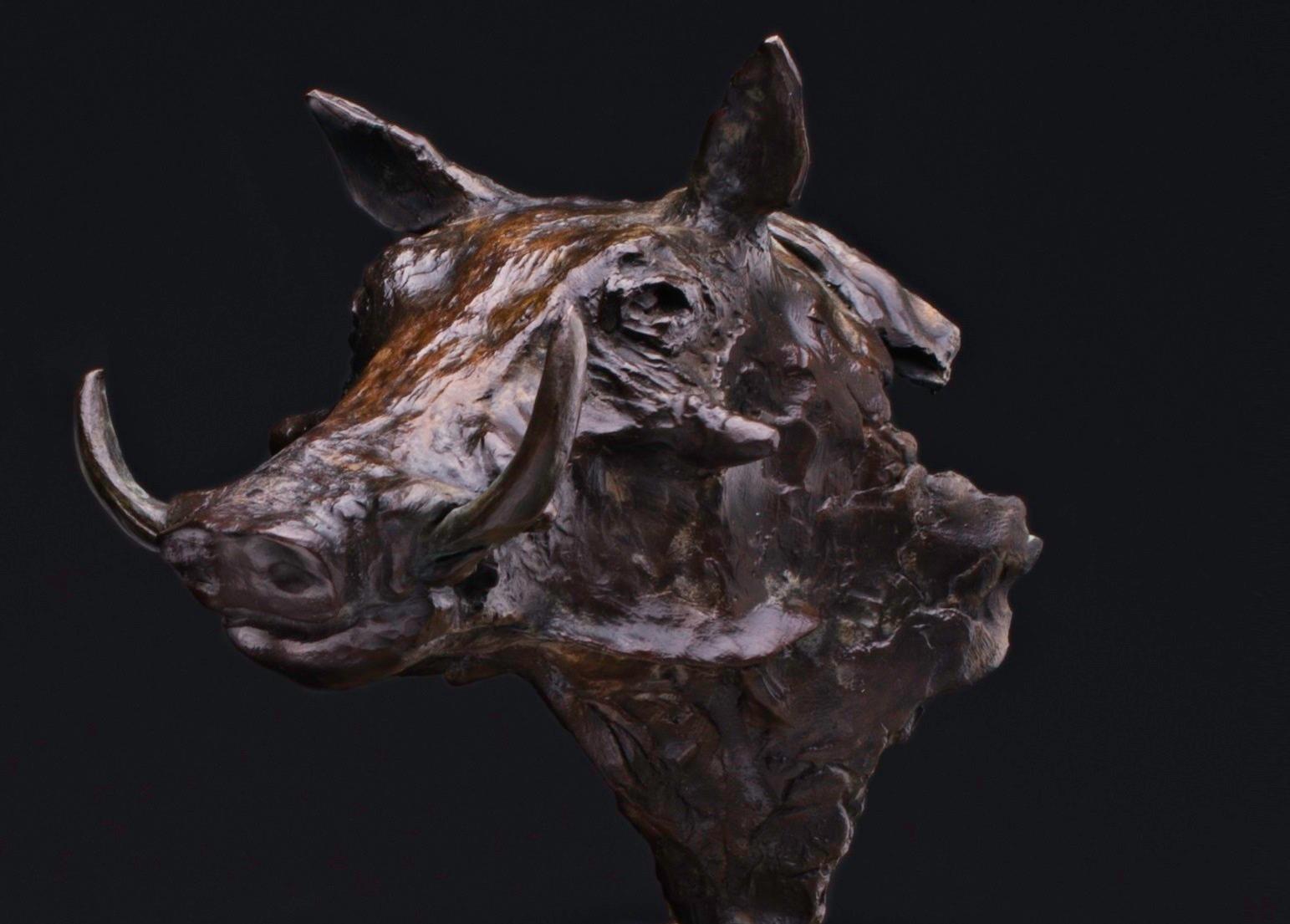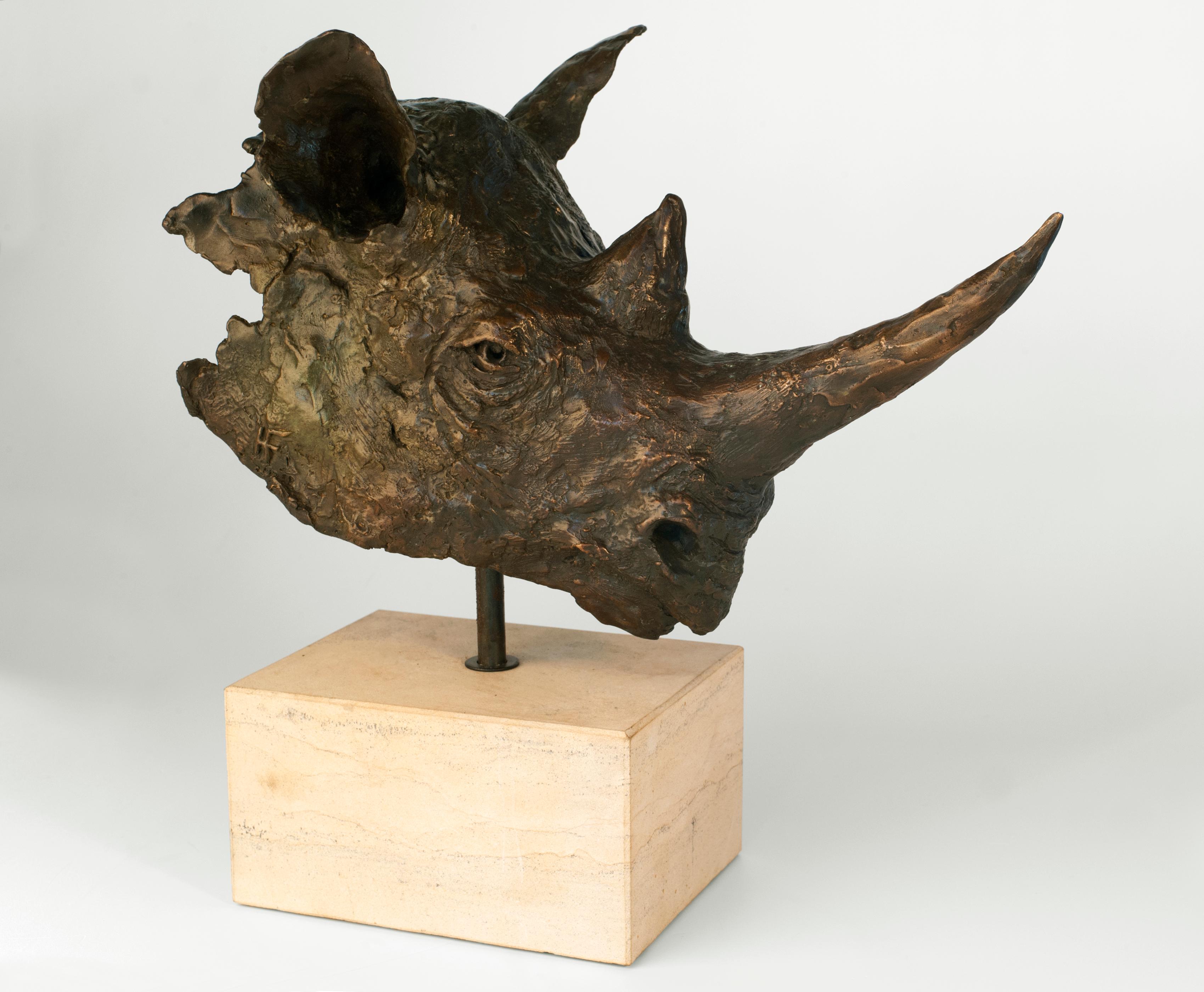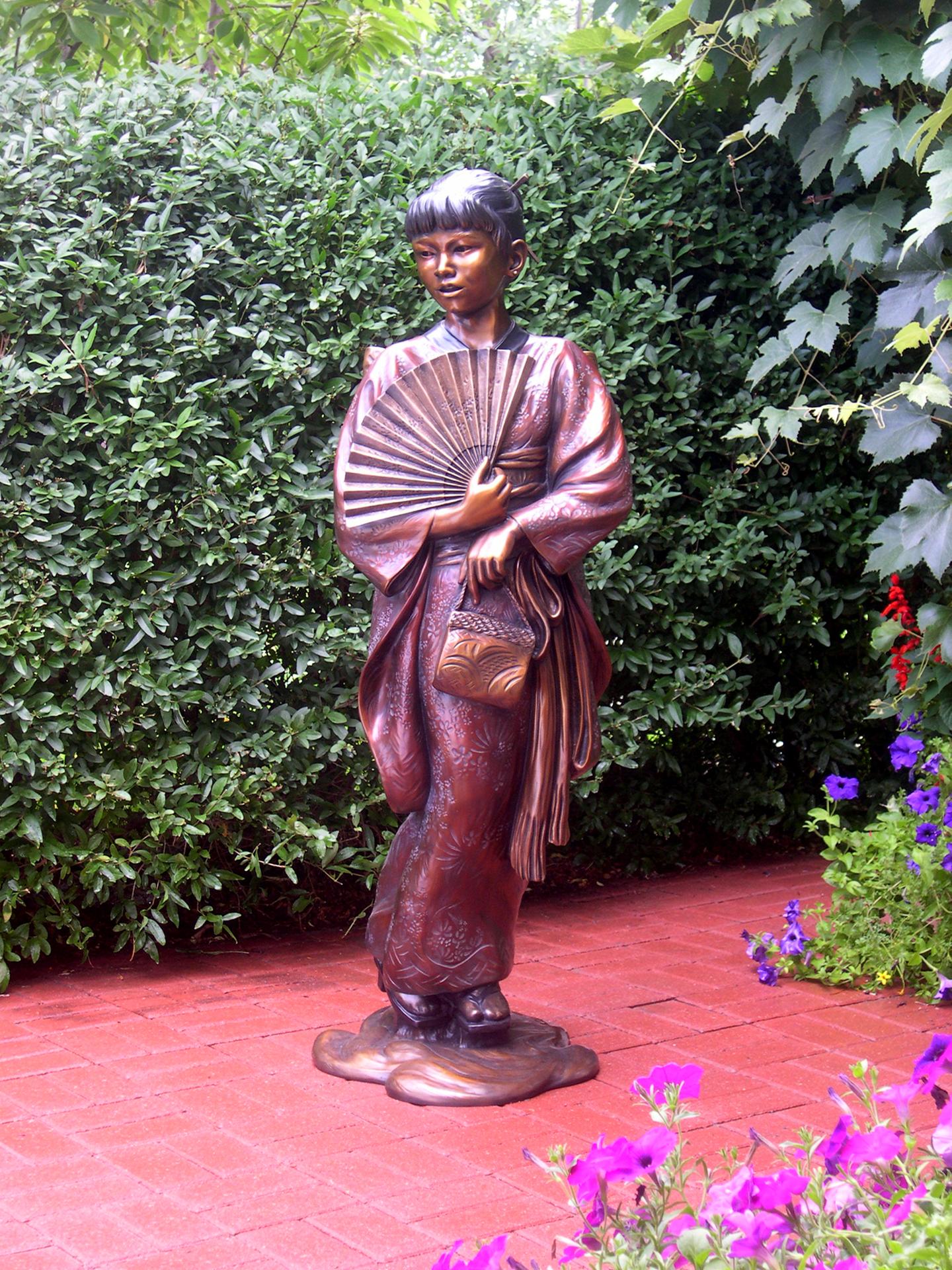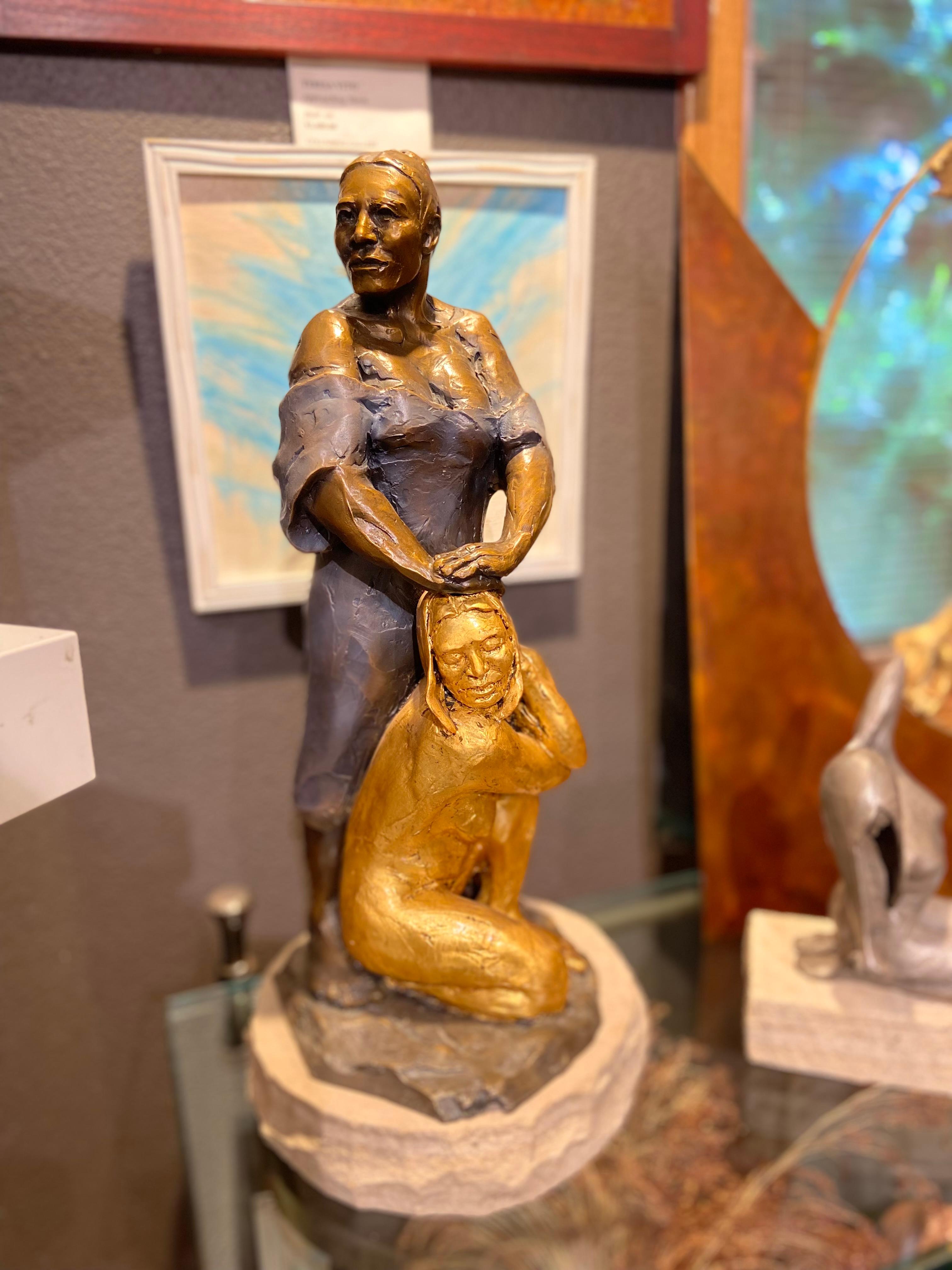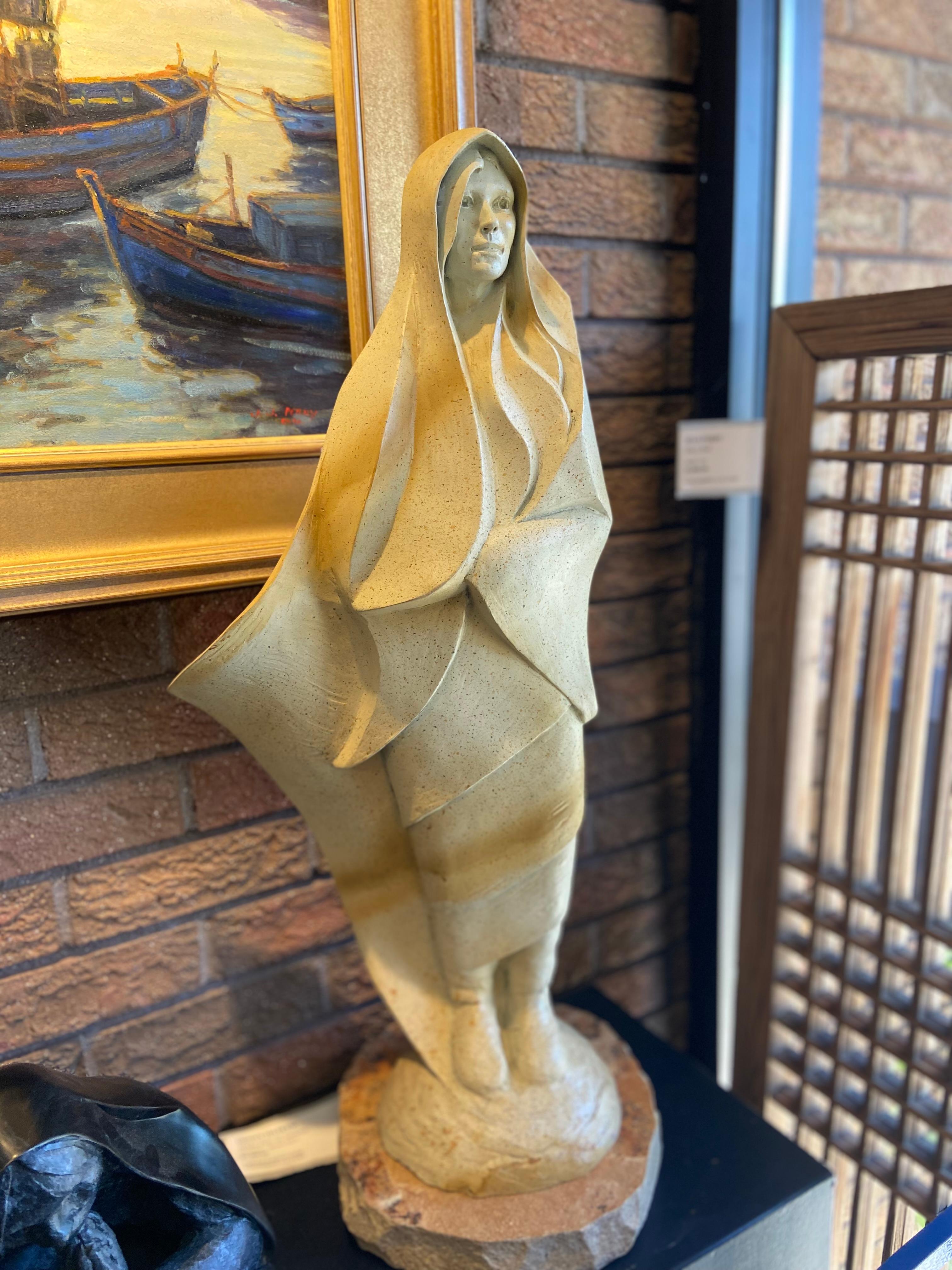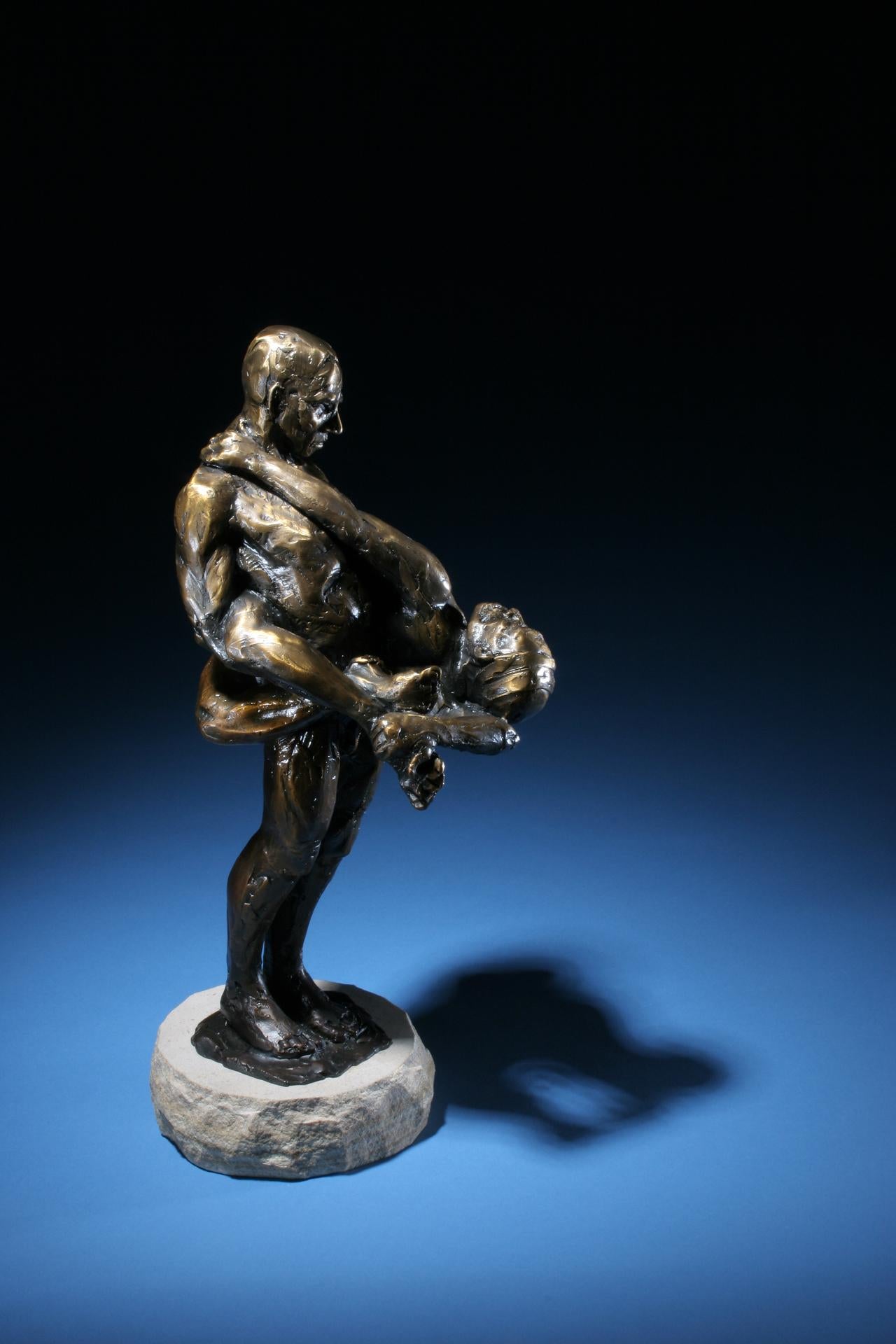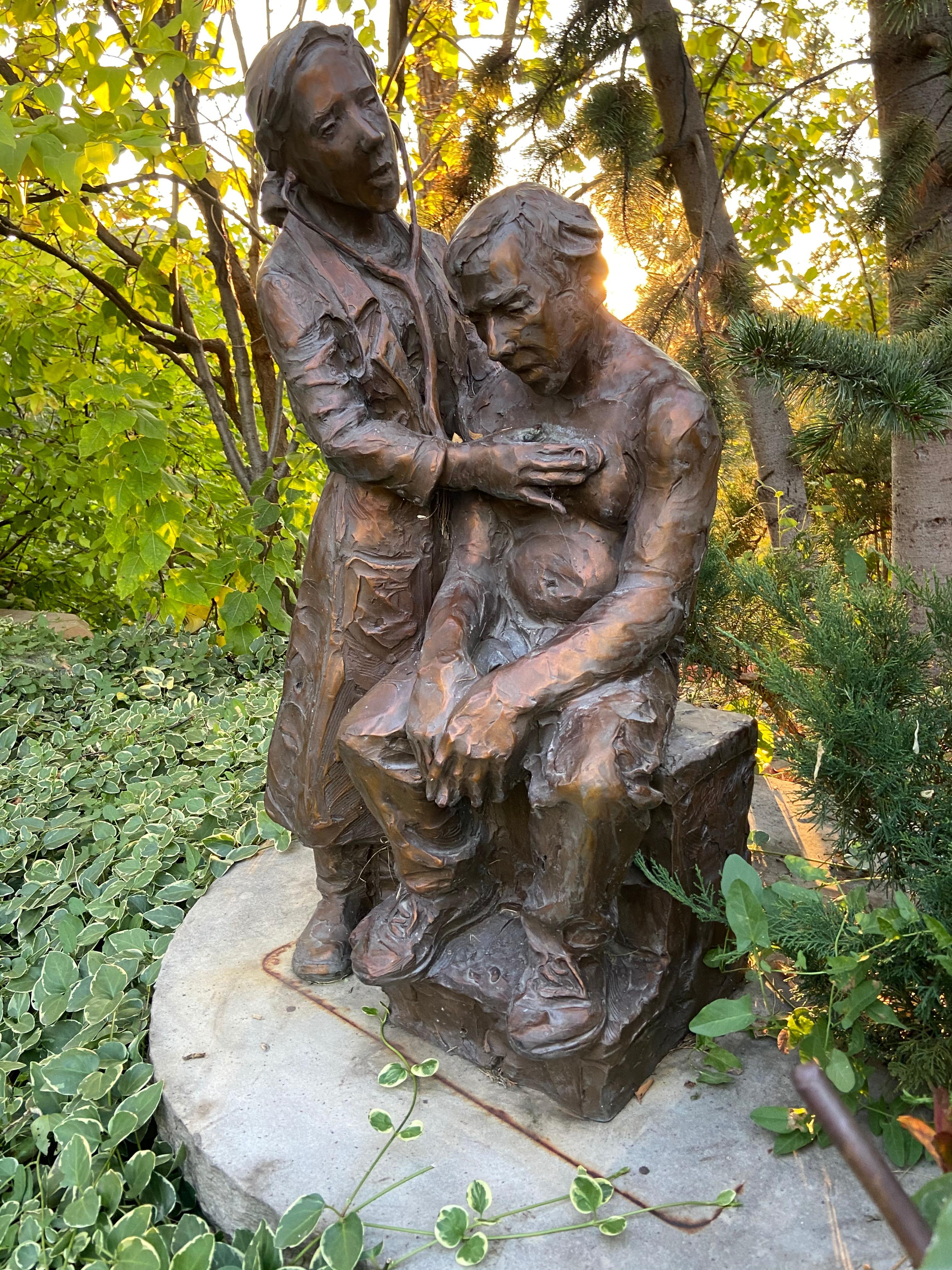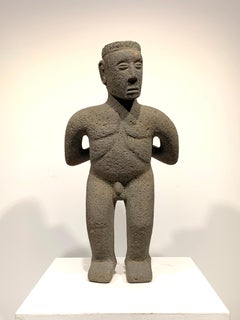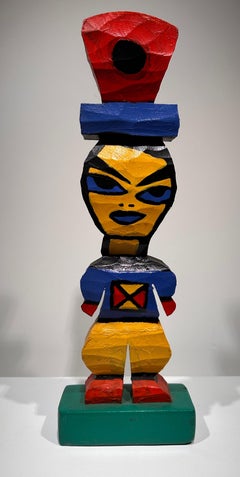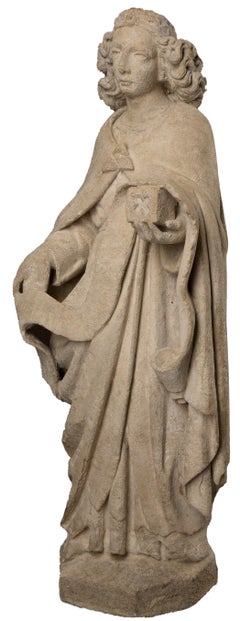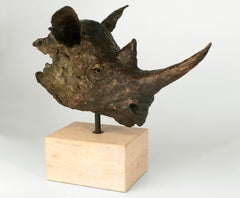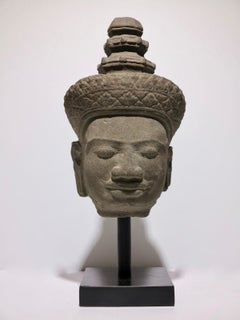
Sandstone head of Vishnu, Khmer, Angkor period, style of Bakheng
View Similar Items
Want more images or videos?
Request additional images or videos from the seller
1 of 10
UnknownSandstone head of Vishnu, Khmer, Angkor period, style of Bakheng10th Century
10th Century
About the Item
- Creation Year:10th Century
- Dimensions:Height: 10.88 in (27.64 cm)Width: 6.75 in (17.15 cm)Depth: 5.88 in (14.94 cm)
- Medium:
- Period:
- Condition:
- Gallery Location:Wilton Manors, FL
- Reference Number:1stDibs: LU24525080642
About the Seller
4.9
Gold Seller
These expertly vetted sellers are highly rated and consistently exceed customer expectations.
Established in 2007
1stDibs seller since 2015
328 sales on 1stDibs
Typical response time: 9 hours
More From This SellerView All
- Costa Rican pre-Columbian sculptural figure ca. 1000-1500Located in Wilton Manors, FLMagnificent standing figure, Costa Rica, ca. 1000-1500. Carved volcanic stone. Measures 16.5 x 9 x 5.5 inches. Outstanding condition with no damage. The figure represents a captured...Category
15th Century and Earlier Figurative Sculptures
MaterialsStone
- Standing FigureLocated in Wilton Manors, FLTom Cramer (b.1960). Standing Figure, 1998. Carved wood and polymer paint. Measures 17.5 inches high. Excellent condition. Signed and dated under base. Tom Cramer is an American artist working in Portland, Oregon noted for his intricately carved and painted wood reliefs and ubiquity throughout the city of Portland. Often called the unofficial Artist Laureate of Portland,[2] Cramer is one of the most visible and successful artists in the city. The influences on his work are both organic and technological. He is widely collected and is in many prominent west coast museum and private collections. He is in the permanent collections of the Portland Art Museum[3] in Portland Oregon, the Halle Ford Museum in Salem Oregon, the Jordan Schnitzer Museum in Eugene, Oregon, the Boise Art Museum in Idaho. Cramer made a name for himself in the 1980s and 1990s becoming a bridge between historical Oregon artists like Clifford Gleason and Milton Wilson...Category
Late 20th Century Neo-Expressionist Figurative Sculptures
MaterialsWood, Latex
- Reclining Figure (woman)By William King (b.1925)Located in Wilton Manors, FLWilliam King (1925-2015). Reclining figure, ca. 1965. Cast and welded bronze, 7 x 9.5 x 5 inches. Unsigned. William King, a sculptor in a variety of materials whose human figures traced social attitudes through the last half of the 20th century, often poking sly and poignant fun at human follies and foibles, died on March 4 at his home in East Hampton, N.Y. He was 90. His death was confirmed by Scott Chaskey, who is married to Mr. King's stepdaughter, Megan Chaskey. Mr. King worked in clay, wood, bronze, vinyl, burlap and aluminum. He worked both big and small, from busts and toylike figures to large public art pieces depicting familiar human poses -- a seated, cross-legged man reading; a Western couple (he in a cowboy hat, she in a long dress) holding hands; a tall man reaching down to tug along a recalcitrant little boy; a crowd of robotic-looking men walking in lock step. But for all its variation, what unified his work was a wry observer's arched eyebrow, the pointed humor and witty rue of a fatalist. His figurative sculptures, often with long, spidery legs and an outlandishly skewed ratio of torso to appendages, use gestures and posture to suggest attitude and illustrate his own amusement with the unwieldiness of human physical equipment. His subjects included tennis players and gymnasts, dancers and musicians, and he managed to show appreciation of their physical gifts and comic delight at their contortions and costumery. His suit-wearing businessmen often appeared haughty or pompous; his other men could seem timid or perplexed or awkward. Oddly, or perhaps tellingly, he tended to depict women more reverentially, though in his portrayals of couples the fragility and tender comedy inherent in couplehood settled equally on both partners. Mr. King's work is in the collections of the Metropolitan Museum of Art and the Museum of Modern Art in New York and the Smithsonian American Art Museum in Washington, among other places, and he had dozens of solo gallery shows in New York and elsewhere. But the comic element of his work probably caused his reputation to suffer. Reviews of his exhibitions frequently began with the caveat that even though the work was funny, it was also serious, displaying superior technical skills, imaginative vision and the bolstering weight of a range of influences, from the ancient Etruscans to American folk art to 20th-century artists including Giacometti, Calder. and Elie Nadelman. The critic Hilton Kramer, one of Mr. King's most ardent advocates, wrote in a 1970 essay accompanying a New York gallery exhibit that he was, "among other things, an amusing artist, and nowadays this can, at times, be almost as much a liability as an asset." A "preoccupation with gesture is the focus of King's sculptural imagination," Mr. Kramer wrote. "Everything that one admires in his work - the virtuoso carving, the deft handling of a wide variety of materials, the shrewd observation and resourceful invention - all this is secondary to the concentration on gesture. The physical stance of the human animal as it negotiates the social arena, the unconscious gait that the body assumes in making its way in the social medium, the emotion traced by the course of a limb, a torso, a head, the features of a face, a coiffure or a costume - from a keen observation of these materials King has garnered a large stock of sculptural images notable for their wit, empathy, simplicity and psychological precision." William Dickey King...Category
Mid-20th Century Abstract Abstract Sculptures
MaterialsBronze
$2,800 Sale Price30% Off - Standing FigureLocated in Wilton Manors, FLTom Cramer (b.1960). Standing Figure, 1980. Carved wood and polymer paint. Measures 11.5 inches high. Excellent condition. Signed and dated under base. Tom Cramer is an American artist working in Portland, Oregon noted for his intricately carved and painted wood reliefs and ubiquity throughout the city of Portland. Often called the unofficial Artist Laureate of Portland,[2] Cramer is one of the most visible and successful artists in the city. The influences on his work are both organic and technological. He is widely collected and is in many prominent west coast museum and private collections. He is in the permanent collections of the Portland Art Museum[3] in Portland Oregon, the Halle Ford Museum in Salem Oregon, the Jordan Schnitzer Museum in Eugene, Oregon, the Boise Art Museum in Idaho. Cramer made a name for himself in the 1980s and 1990s becoming a bridge between historical Oregon artists like Clifford Gleason and Milton Wilson...Category
Late 20th Century Neo-Expressionist Figurative Sculptures
MaterialsWood, Latex
- Pre-Columbian Colima Shaman terracotta figure vessel Mexican sculptureLocated in Wilton Manors, FLSeated Shaman Colima culture Mexico ca. 300 BCE - 300 CE Pre-Columbian, West Mexico, Colima, ca. 300 BCE to 300 CE. A hollow-cast and highly-burnished terraco...Category
15th Century and Earlier Figurative Sculptures
MaterialsTerracotta
$9,750 Sale Price61% Off - Abstract FigureBy Raul DiazLocated in Wilton Manors, FLRaul Diaz (Argentina, b.1950). Abstract Figure, ca. 1970s. Canved Walnut. Measures 17 inches tall including wood base. Carved signature in lower region. Excellent condition. An ear...Category
1970s Abstract Expressionist Abstract Sculptures
MaterialsWalnut
$1,200
You May Also Like
- Standing EngelLocated in Wien, WienStanding angel with banner Flemish Around 1450/60 Sandstone 60 x 21 x 15 cm This museum figurine shows a standing angel with a banner in his right hand and a small box in his left. The youthful, ageless figure wears a coat held together with a triangular, floral brooch in front of the chest over a long robe. The angel’s gaze is directed forward, his head tilted slightly to the left. The elongated face is sculpted: the large almond-shaped eyes with accentuated upper and lower eyelids are alertly open and sharp eyebrows lead directly into the root of the nose. The straight nose above the pronounced mouth completes the idealized oval face of the angel and his calm, internalized facial expression. What is particularly remarkable, however, is the magnificent curls, which are only partially tamed by a simple headband. As if puffed up by the wind, the hair, which is sometimes streaked in parallel, sometimes wildly twisted and richly curled, stands out dynamically from the ears. The tilted head with these sideways protruding waves of hair thus conveys an immediate impression of movement. The physicality of the sculpture is expressed particularly through this organic, lifelike movement of the loosened hair. The lively overall impression of the figure is further enhanced by the multiple rolled banners that the angel presents to the viewer. The outstretched palm of the right hand appears both intimate and confidential as well as mystically revealing. This banderole winds in gentle curves in front of the figure’s body, throws a fold over the second attribute in the angel’s left hand and falls downwards in a loose manner. The volute-shaped rolled up end of the banner clearly shows the fine texture of the banner and at the same time draws the viewer’s attention to the small cube-shaped box that the angel is holding in its slender, long-limbed fingers. The cube is decorated with a Gothic quatrefoil motif, which is often seen in the architectural tracery of windows, but was also often used to decorate caskets and other small treasures. The sweeping gestures in the presentation of the attributes suggest three-dimensionality, in contrast to the tubular folds at the base of the neck and the intricate draperies in flat and multiple overlapping garment sections. The soft curves of the folds give the impression that the clothing is made of a heavy fabric that falls diagonally down the front and is laid in several bowl folds under the right hand. Overall, the sculptural work testifies to the highest artistic skill, which emphasizes the virtuosity of sculpture in its precious and representative overall impression. The memorable characteristics recognizable here can be seen in comparable pictorial works from Utrecht around the middle of the 15th century, when sculptural art – especially stone sculpture – was characterized by a remarkably high quality. Particularly noteworthy is the accentuated Utrecht head type with an elongated oval face, almond-shaped eyes with heavy lids and dense, vividly protruding tufts of hair framing the head. For example, the figure is comparable to a capital of an angel on the east side of the rood screen of the Joriskerk in Amersfoort (province of Utrecht) from the second quarter of the 15th century. Not only the physiognomy and hair, which in the comparative example stand somewhat more horizontally to one side, but also the garment puff above the girdle are similar. Even more related motifs, such as the cleverly placed bowl folds, can be found on the limestone figure...Category
15th Century and Earlier Figurative Sculptures
MaterialsSandstone
- Warthog Bust - Bronze Wildlife SculptureLocated in Pretoria, ZABronze Warthog Bust on Sandstone base H 16 cm x W 13 cm x D 8 cm. Base size 8 x 8 x 4 cm. Edition 2 of 9 - ready for shipping. Meticulously crafted, this bronze artwork captures the ...Category
2010s Expressionist Figurative Sculptures
MaterialsSandstone, Bronze
- Black Rhino Bust - Bronze Sculpture - Limited EditionLocated in Pretoria, ZABlack Rhino Bust with brown green patina, Limited Edition of 12, bronze sculpture on Sandstone base. The first time I was sculpting in the field, all I saw oft this magnificent Black...Category
2010s Figurative Sculptures
MaterialsSandstone, Bronze
- “Knife Wrestlers”, After The Statue By J. P. Molin, Stockholm 1867Located in PARIS, FRRare and imposing reduction of the famous statue of JP Molin, inaugurated in 1867 in front of the National Museum of Stockholm. This version in black enamelled stoneware was produced...Category
1860s Academic Figurative Sculptures
MaterialsSandstone
- KimikoBy Gary AlsumLocated in Loveland, COKimiko by Gary Alsum Bronze ed/7, 54x19x20", comes with 3" high, 24" diameter sandstone round base as pictured in the garden images. Young woman in traditional attire holding an fan. Ideal scale for a garden setting. ABOUT THE ARTIST: Taking the knowledge passed on from artists such as Fritz White, Glenna Goodacre...Category
Early 2000s Realist Figurative Sculptures
MaterialsSandstone, Bronze
$21,000 - Our LoveBy Denny HaskewLocated in Loveland, CO"Our Love" by Denny Haskew Figurative Female Nude 23x10x10" Bronze with Gold Leaf, Limited Edition of 21 (#2 available) Sandstone base included "Love isn't something you find. Love...Category
2010s Contemporary Figurative Sculptures
MaterialsSandstone, Gold Leaf, Bronze
Recently Viewed
View AllMore Ways To Browse
Period Sculpture
Antique Sandstone
Sandstone Carved
15th Century Sculpture Head
Carved Sandstone Sculpture
Cambodian Antique
10th Century Sculpture
Cambodia Sculpture
Sandstone Head
Khmer Cambodia
Sandstone Head Sculpture
Angkor Art
Khmer Sculpture
Khmer Angkor
Cambodia Head
Cambodian Head
Khmer Head
Khmer Sandstone
